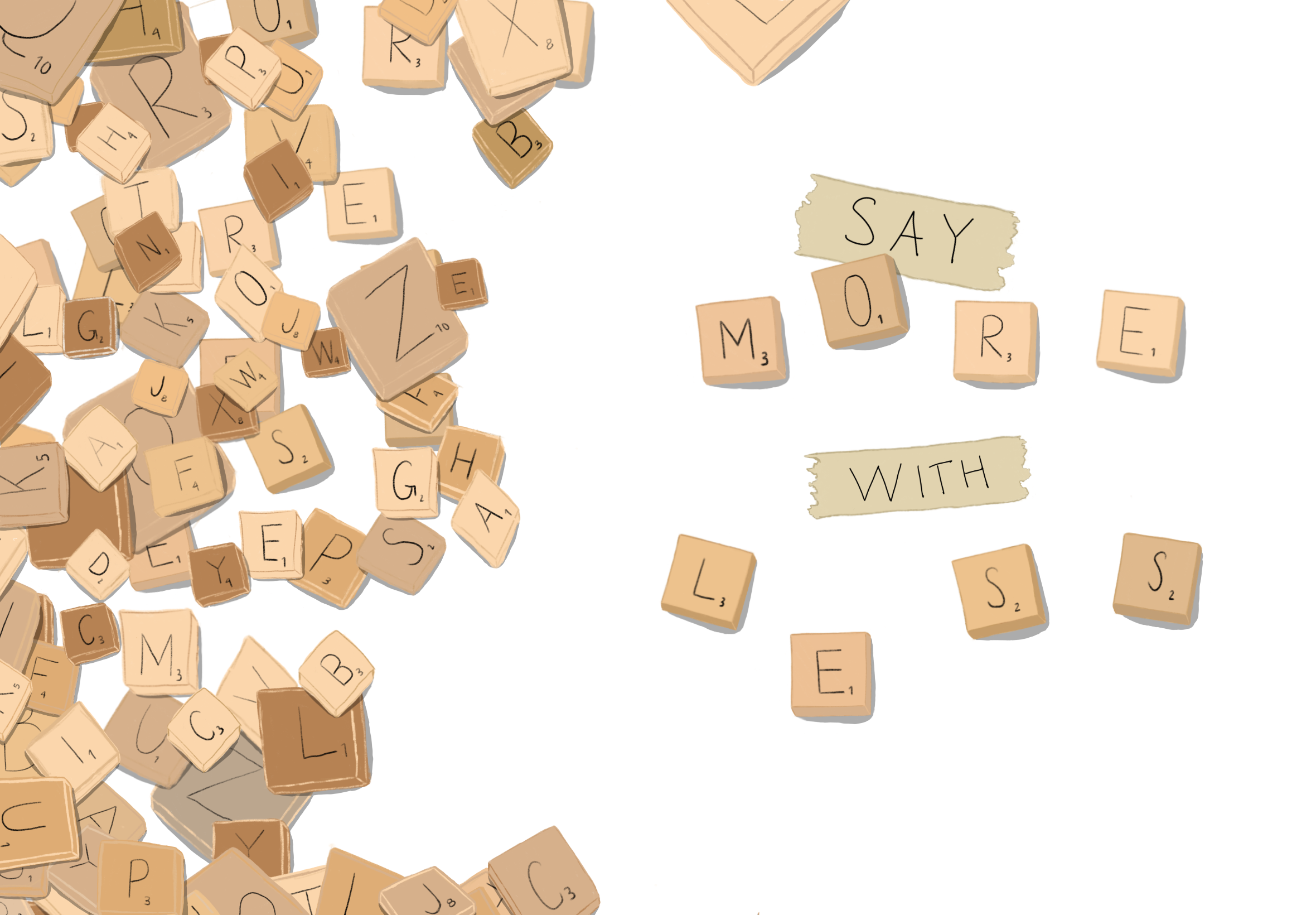The inherent desire to make our writing sound as sophisticated and scholarly as possible has likely been ingrained in all of us throughout our academic careers. I often get excited when I can throw a fancy vocabulary word in a paper, eager to boost my credibility and impress my professor—who can resist the urge to use words like “myriad” or “ubiquitous” when they have the chance? However, in reality, the overuse of superfluous vocabulary (see, I just did it!) doesn’t have the effect you may think. There is a distinct need in our community and the world beyond to make our writing as clear as possible, an approach known as plain language. In this case, less really can be more.
So what is plain language? Pretty much exactly what it sounds like. Plain language is concise communication that your audience can easily understand the first time they read or hear it. Plain language doesn’t mean oversimplifying the content of your writing. You’re not changing what you say, but how you say it—typically with fewer words and simpler terminology. I could argue that it would greatly behoove the Georgetown community to decrease our utilization of unnecessarily convoluted rhetoric, or I could state that the Georgetown community should use plain language.
It can be as simple as making a few sentence-level changes: choose common words instead of flaunting an impressive vocabulary, shorten your sentences by sticking to one idea per sentence, and challenge the purpose of every word. More broadly, it’s crucial to identify your audience. Writing for kindergarteners? Use language they will be able to understand. Addressing a group of experts about a topic in their field? Feel free to be more specific and use appropriate terminology while still employing principles that keep your language accessible to readers. These are only a few strategies promoted by the federal plain language guidelines, all of which aim to help you share your message with as much clarity as possible.
You may be worried that using such basic language will make you seem less smart or fail to impress your audience. This is a valid concern, considering the overly complicated language that is all too prevalent in academia. Georgetown’s undeniably competitive environment also adds to this pressure—many of us have likely been insecure about our writing skills in comparison to others’, or felt a dire need to get the best grade on a paper.
However, the opposite is true: plain language makes you look smarter. If people easily understand what you’re trying to say, they won’t be left frustrated or misinterpret your message. It actually requires you to be smarter, too—successfully explaining something in simpler terms requires a deeper understanding of that topic. Imagine describing a complicated concept you learned in your biology class to your friend who’s a history major. If you can do it in a way that makes them get it easily, you clearly know your stuff (and your friend will think so too). Plain language not only strengthens your point, but allows you to express it as smoothly and efficiently as possible.
Beyond our personal lives, plain language is critical from an accessibility perspective. Writing, particularly in an academic context, is often made inaccessible to those who may not be able to understand the nuanced discourse of a particular topic. People with cognitive disabilities, lower reading levels, or unfamiliarity with a certain subject can all feel alienated from advanced scholarship, and they may benefit from simpler language. This also applies to non-native English speakers for whom plain language can be crucial in everyday life, from reading signs to gaining an education.
Consider some of the many real-world benefits: plain language can be used in prescription medicine instructions to prevent misuse, in the legal system (it’s pretty important to know your rights), and in the worldwide sharing of information. During the height of COVID, more accessible language may have helped people better understand
emerging safety guidelines, such as proper quarantine and social distancing protocols. It could have demystified the confusion and controversy surrounding vaccines and consequently prevented deaths. Any writing, from dense academic texts to confusingly worded emails, is made inaccessible to many when it lacks clarity.
So, how do we go about implementing this in our world? We can’t go back and edit the overly complex works of renowned authors and theorists, nor can we vow to simplify all language in all contexts. Certain academic disciplines may require or prefer such language, but this doesn’t exclude them from finding ways to make their content more comprehensible. The key to making information accessible to all is to use plain language anywhere we possibly can. This can be as straightforward as making a few small changes at Georgetown, like employing simpler language in schoolwide emails, university websites, course syllabi, and assignment instructions. We can extend it to academia as well through plain language summaries or plain language versions that serve as helpful additions to the original content. These can make complicated works (like scientific articles or dense works of theory) easier to understand, increasing their ability to reach all students and the general public.
As difficult as it may seem, I challenge you to resist the urge to overcomplicate your writing just to “sound smarter.” More importantly, I challenge the broader Georgetown community to recognize the necessity of accessible language and to implement it in your own writing and communication in as many ways as possible. It’s for our own good: any information worth sharing within a community should be easily understood by all.





